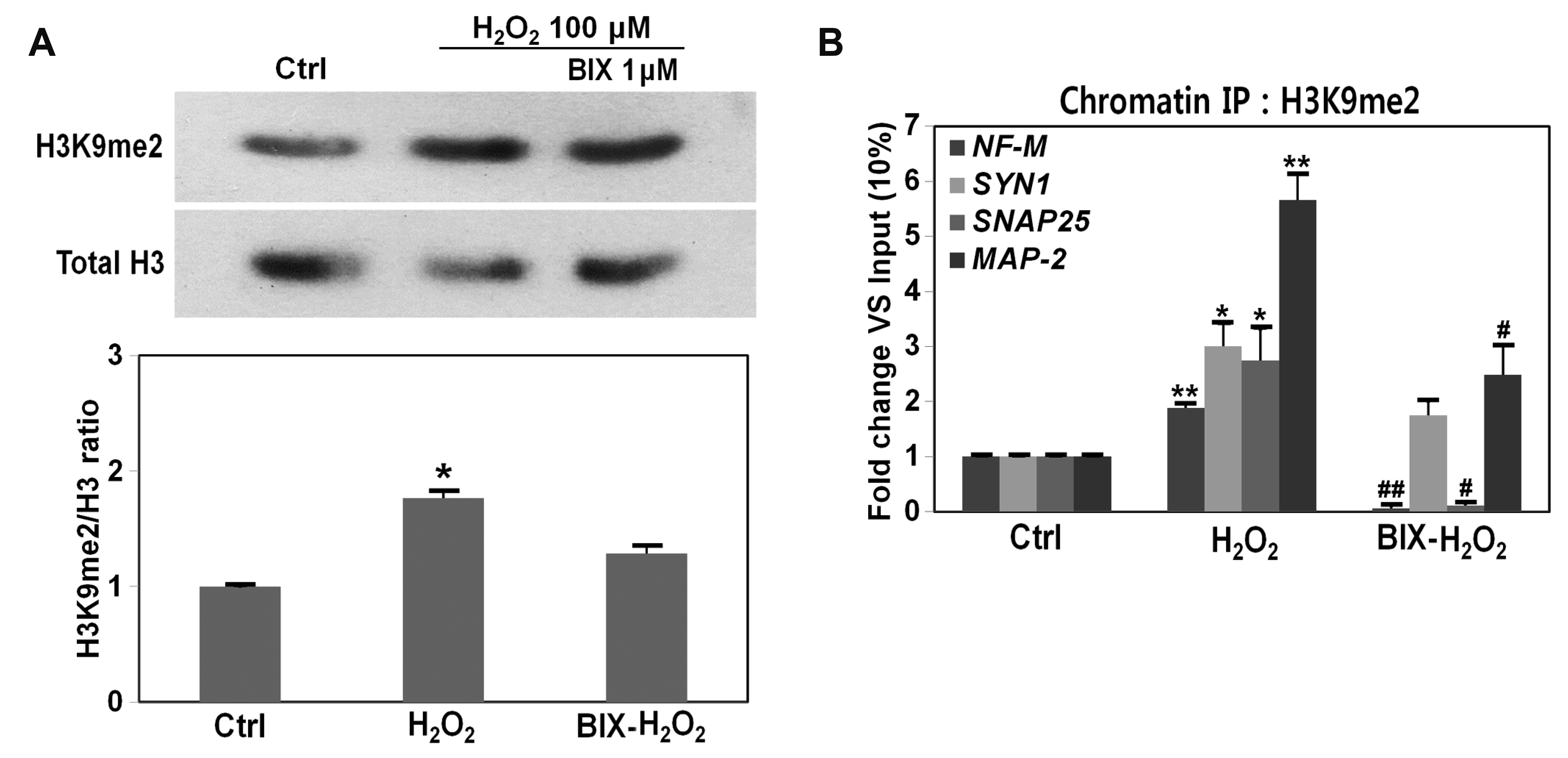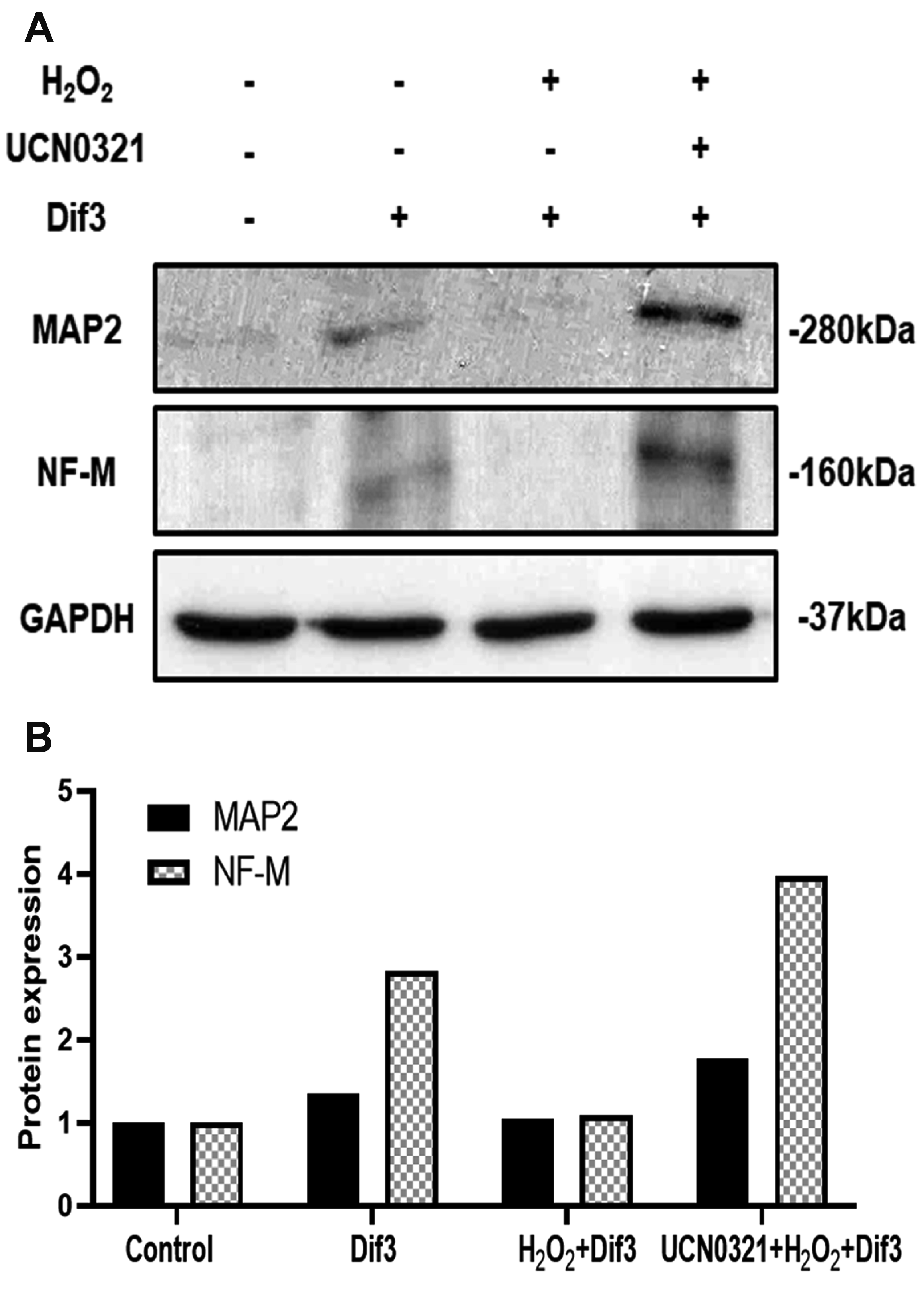1. Kauser H, Sahu S, Panjwani U. 2016; Guanfacine promotes neuronal survival in medial prefrontal cortex under hypobaric hypoxia. Brain Res. 1636:152–160. DOI:
10.1016/j.brainres.2016.01.053. PMID:
26854138.

2. Pradhan SS, Salinas K, Garduno AC, Johansson JU, Wang Q, Manning-Bog A, Andreasson KI. 2017; Anti-inflammatory and neuroprotective effects of PGE
2 EP4 signaling in models of Parkinson's disease. J Neuroimmune Pharmacol. 12:292–304. DOI:
10.1007/s11481-016-9713-6. PMID:
27734267. PMCID:
PMC5389937.

3. Neniskyte U, Fricker M, Brown GC. 2016; Amyloid β induces microglia to phagocytose neurons via activation of protein kinase Cs and NADPH oxidase. Int J Biochem Cell Biol. 81(Pt B):346–355. DOI:
10.1016/j.biocel.2016.06.005. PMID:
27267660.


4. Olney JW, Tenkova T, Dikranian K, Qin YQ, Labruyere J, Ikonomidou C. 2002; Ethanol-induced apoptotic neurodegeneration in the developing C57BL/6 mouse brain. Brain Res Dev Brain Res. 133:115–126. DOI:
10.1016/S0165-3806(02)00279-1. PMID:
11882342.


5. Wang X, Hu X, Yang Y, Takata T, Sakurai T. 2016; Nicotinamide mononucleotide protects against β-amyloid oligomer-induced cognitive impairment and neuronal death. Brain Res. 1643:1–9. DOI:
10.1016/j.brainres.2016.04.060. PMID:
27130898.

6. Ramesh G, Meisner OC, Philipp MT. 2015; Anti-inflammatory effects of dexamethasone and meloxicam on Borrelia burgdorferi-induced inflammation in neuronal cultures of dorsal root ganglia and myelinating cells of the peripheral nervous system. J Neuroinflammation. 12:240. DOI:
10.1186/s12974-015-0461-y. PMID:
26700298. PMCID:
PMC4690425.



7. Bernstein BE, Stamatoyannopoulos JA, Costello JF, Ren B, Milosavljevic A, Meissner A, Kellis M, Marra MA, Beaudet AL, Ecker JR, Farnham PJ, Hirst M, Lander ES, Mikkelsen TS, Thomson JA. 2010; The NIH Roadmap Epigenomics Mapping Consortium. Nat Biotechnol. 28:1045–1048. DOI:
10.1038/nbt1010-1045. PMID:
20944595. PMCID:
PMC3607281.



10. Landgrave-Gómez J, Mercado-Gómez O, Guevara-Guzmán R. 2015; Epigenetic mechanisms in neurological and neurodegenerative diseases. Front Cell Neurosci. 9:58. DOI:
10.3389/fncel.2015.00058. PMID:
25774124. PMCID:
PMC4343006.



11. Noh KM, Hwang JY, Follenzi A, Athanasiadou R, Miyawaki T, Greally JM, Bennett MV, Zukin RS. 2012; Repressor element-1 silencing transcription factor (REST)-dependent epigenetic remodeling is critical to ischemia-induced neuronal death. Proc Natl Acad Sci U S A. 109:E962–E971. DOI:
10.1073/pnas.1121568109. PMID:
22371606. PMCID:
PMC3341013.

12. Liu H, Le W. 2014; Epigenetic modifications of chronic hypoxia-mediated neurodegeneration in Alzheimer's disease. Transl Neurodegener. 3:7. DOI:
10.1186/2047-9158-3-7. PMID:
24650677. PMCID:
PMC3994488.



13. Subbanna S, Nagre NN, Shivakumar M, Umapathy NS, Psychoyos D, Basavarajappa BS. 2014; Ethanol induced acetylation of histone at G9a exon1 and G9a-mediated histone H3 dimethylation leads to neurodegeneration in neonatal mice. Neuroscience. 258:422–432. DOI:
10.1016/j.neuroscience.2013.11.043. PMID:
24300108. PMCID:
PMC3954640.

14. Thiel G, Ekici M, Rössler OG. 2015; RE-1 silencing transcription factor (REST): a regulator of neuronal development and neuronal/endocrine function. Cell Tissue Res. 359:99–109. DOI:
10.1007/s00441-014-1963-0. PMID:
25092546.

16. Ding N, Zhou H, Esteve PO, Chin HG, Kim S, Xu X, Joseph SM, Friez MJ, Schwartz CE, Pradhan S, Boyer TG. 2008; Mediator links epigenetic silencing of neuronal gene expression with x-linked mental retardation. Mol Cell. 31:347–359. DOI:
10.1016/j.molcel.2008.05.023. PMID:
18691967. PMCID:
PMC2583939.



17. Ding N, Tomomori-Sato C, Sato S, Conaway RC, Conaway JW, Boyer TG. 2009; MED19 and MED26 are synergistic functional targets of the RE1 silencing transcription factor in epigenetic silencing of neuronal gene expression. J Biol Chem. 284:2648–2656. DOI:
10.1074/jbc.M806514200. PMID:
19049968. PMCID:
PMC2631966.

18. Wang Z, Yang D, Zhang X, Li T, Li J, Tang Y, Le W. 2011; Hypoxia-induced down-regulation of neprilysin by histone modification in mouse primary cortical and hippocampal neurons. PLoS One. 6:e19229. DOI:
10.1371/journal.pone.0019229. PMID:
21559427. PMCID:
PMC3084787.

19. Subbanna S, Shivakumar M, Umapathy NS, Saito M, Mohan PS, Kumar A, Nixon RA, Verin AD, Psychoyos D, Basavarajappa BS. 2013; G9a-mediated histone methylation regulates ethanol-induced neurodegeneration in the neonatal mouse brain. Neurobiol Dis. 54:475–485. DOI:
10.1016/j.nbd.2013.01.022. PMID:
23396011. PMCID:
PMC3656439.



20. Kubicek S, O'Sullivan RJ, August EM, Hickey ER, Zhang Q, Teodoro ML, Rea S, Mechtler K, Kowalski JA, Homon CA, Kelly TA, Jenuwein T. 2007; Reversal of H3K9me2 by a small-molecule inhibitor for the G9a histone methyltransferase. Mol Cell. 25:473–481. DOI:
10.1016/j.molcel.2007.01.017. PMID:
17289593.


21. Ahn MJ, Jeong SG, Cho GW. 2016; Antisenescence activity of G9a inhibitor BIX01294 on human bone marrow mesenchymal stromal cells. Turk J Biol. 40:443–451. DOI:
10.3906/biy-1507-11.

22. Kim HT, Jeong SG, Cho GW. 2016; G9a inhibition promotes neuronal differentiation of human bone marrow mesenchymal stem cells through the transcriptional induction of RE-1 containing neuronal specific genes. Neurochem Int. 96:77–83. DOI:
10.1016/j.neuint.2016.03.002. PMID:
26952575.


23. Shankar SR, Bahirvani AG, Rao VK, Bharathy N, Ow JR, Taneja R. 2013; G9a, a multipotent regulator of gene expression. Epigenetics. 8:16–22. DOI:
10.4161/epi.23331. PMID:
23257913. PMCID:
PMC3549875.



24. Schweizer S, Harms C, Lerch H, Flynn J, Hecht J, Yildirim F, Meisel A, Märschenz S. 2015; Inhibition of histone methyltransferases SUV39H1 and G9a leads to neuroprotection in an in vitro model of cerebral ischemia. J Cereb Blood Flow Metab. 35:1640–1647. DOI:
10.1038/jcbfm.2015.99. PMID:
25966950. PMCID:
PMC4640311.



25. Zhou Q, Obana EA, Radomski KL, Sukumar G, Wynder C, Dalgard CL, Doughty ML. 2016; Inhibition of the histone demethylase Kdm5b promotes neurogenesis and derepresses Reln (reelin) in neural stem cells from the adult subventricular zone of mice. Mol Biol Cell. 27:627–639. DOI:
10.1091/mbc.E15-07-0513. PMID:
26739753. PMCID:
PMC4750923.



26. Chen X, Du Z, Shi W, Wang C, Yang Y, Wang F, Yao Y, He K, Hao A. 2014; 2-Bromopalmitate modulates neuronal differentiation through the regulation of histone acetylation. Stem Cell Res. 12:481–491. DOI:
10.1016/j.scr.2013.12.010. PMID:
24434630.


27. Jeong SG, Ohn T, Kim SH, Cho GW. 2013; Valproic acid promotes neuronal differentiation by induction of neuroprogenitors in human bone-marrow mesenchymal stromal cells. Neurosci Lett. 554:22–27. DOI:
10.1016/j.neulet.2013.08.059. PMID:
24021810.

28. Joe IS, Jeong SG, Cho GW. 2015; Resveratrol-induced SIRT1 activation promotes neuronal differentiation of human bone marrow mesenchymal stem cells. Neurosci Lett. 584:97–102. DOI:
10.1016/j.neulet.2014.10.024. PMID:
25459285.

29. Oh YS, Kim SH, Cho GW. 2016; Functional restoration of amyotrophic lateral sclerosis patient-derived mesenchymal stromal cells through inhibition of DNA methyltransferase. Cell Mol Neurobiol. 36:613–620. DOI:
10.1007/s10571-015-0242-2. PMID:
26210997.


30. Roopra A, Qazi R, Schoenike B, Daley TJ, Morrison JF. 2004; Localized domains of G9a-mediated histone methylation are required for silencing of neuronal genes. Mol Cell. 14:727–738. DOI:
10.1016/j.molcel.2004.05.026. PMID:
15200951.


31. Subbanna S, Basavarajappa BS. 2014; Pre-administration of G9a/GLP inhibitor during synaptogenesis prevents postnatal ethanol-induced LTP deficits and neurobehavioral abnormalities in adult mice. Exp Neurol. 261:34–43. DOI:
10.1016/j.expneurol.2014.07.003. PMID:
25017367. PMCID:
PMC4194267.

32. Sharma M, Dierkes T, Sajikumar S. 2017; Epigenetic regulation by G9a/GLP complex ameliorates amyloid-beta 1-42 induced deficits in long-term plasticity and synaptic tagging/capture in hippocampal pyramidal neurons. Aging Cell. 16:1062–1072. DOI:
10.1111/acel.12634. PMID:
28665013. PMCID:
PMC5595698.



33. Fang Q, Strand A, Law W, Faca VM, Fitzgibbon MP, Hamel N, Houle B, Liu X, May DH, Poschmann G, Roy L, Stühler K, Ying W, Zhang J, Zheng Z, Bergeron JJ, Hanash S, He F, Leavitt BR, Meyer HE, et al. 2009; Brain-specific proteins decline in the cerebrospinal fluid of humans with Huntington disease. Mol Cell Proteomics. 8:451–466. DOI:
10.1074/mcp.M800231-MCP200. PMID:
18984577. PMCID:
PMC2649809.



34. Merienne N, Meunier C, Schneider A, Seguin J, Nair SS, Rocher AB, Le Gras S, Keime C, Faull R, Pellerin L, Chatton JY, Neri C, Merienne K, Déglon N. 2019; Cell-type-specific gene expression profiling in adult mouse brain reveals normal and disease-state signatures. Cell Rep. 26:2477–2493.e9. DOI:
10.1016/j.celrep.2019.02.003. PMID:
30811995.

35. Pearl JR, Colantuoni C, Bergey DE, Funk CC, Shannon P, Basu B, Casella AM, Oshone RT, Hood L, Price ND, Ament SA. 2019; Genome-scale transcriptional regulatory network models of psychiatric and neurodegenerative disorders. Cell Syst. 8:122–135.e7. DOI:
10.1016/j.cels.2019.01.002. PMID:
30772379.










 PDF
PDF Citation
Citation Print
Print


 XML Download
XML Download